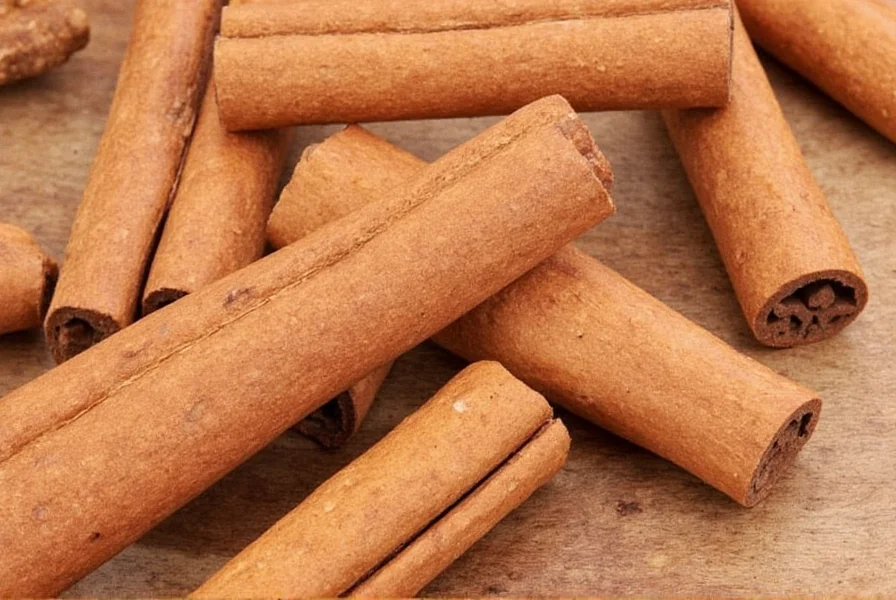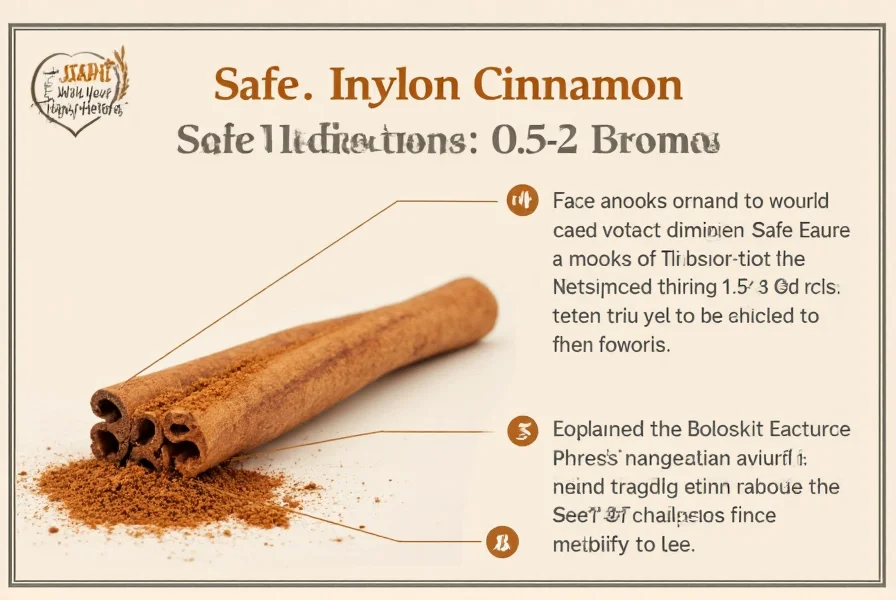The recommended daily intake of Ceylon cinnamon is 0.5 to 3 grams (approximately 1/4 to 1 1/4 teaspoons). This amount provides potential health benefits while staying well below safety thresholds for coumarin, the compound that makes excessive cinnamon consumption risky. Most clinical studies showing benefits used 1-2 grams daily for periods of 8-12 weeks.
When exploring natural approaches to wellness, understanding proper dosage is crucial. Ceylon cinnamon (Cinnamomum verum), often called "true cinnamon," has gained attention for its potential health benefits and significantly lower coumarin content compared to the more common Cassia variety. Getting the daily amount right ensures you maximize benefits while avoiding potential risks.
Understanding Ceylon Cinnamon and Its Benefits
Ceylon cinnamon originates from Sri Lanka and southern India, featuring a delicate, sweet flavor profile with subtle citrus notes. Unlike Cassia cinnamon (the variety most commonly found in supermarkets), Ceylon contains minimal coumarin—a naturally occurring compound that can cause liver damage in high doses over time.
Research suggests Ceylon cinnamon may support:
- Blood sugar regulation through improved insulin sensitivity
- Antioxidant protection against cellular damage
- Anti-inflammatory effects that may benefit cardiovascular health
- Moderate antimicrobial properties
These potential benefits make understanding the appropriate daily ceylon cinnamon consumption amount essential for those incorporating it into their wellness routine.

Coumarin Content: The Critical Safety Factor
The primary reason dosage matters with cinnamon is coumarin content. While Cassia cinnamon contains 1-13% coumarin by weight, Ceylon cinnamon typically contains only 0.004-0.14%. This dramatic difference makes Ceylon the safer choice for regular consumption.
| Cinnamon Type | Coumarin Content (per gram) | Maximum Safe Daily Intake |
|---|---|---|
| Ceylon (C. verum) | 0.017-0.13 mg | 3-6 grams |
| Cassia (C. cassia) | 3.7-118 mg | 0.5-1 gram |
European Food Safety Authority (EFSA) established a tolerable daily intake (TDI) of 0.1 mg coumarin per kilogram of body weight. For a 70 kg (154 lb) adult, this translates to a maximum of 7 mg coumarin daily. With Ceylon cinnamon's low coumarin levels, you'd need to consume over 50 grams daily to approach this limit—far beyond typical usage.
Evidence-Based Daily Dosage Guidelines
Based on clinical research and safety considerations, here's how to determine your optimal ceylon cinnamon daily dosage:
General Wellness Support
For general antioxidant and anti-inflammatory benefits: 0.5-1 gram (approximately 1/8 to 1/4 teaspoon) daily. This modest amount provides benefits while ensuring long-term safety for daily consumption.
Blood Sugar Management
Studies showing positive effects on blood glucose levels typically used 1-3 grams (1/4 to 1 1/4 teaspoons) daily for 8-12 weeks. The American Diabetes Association notes that while cinnamon shows promise, it should complement—not replace—standard diabetes care.
Short-Term Therapeutic Use
Some protocols suggest up to 3 grams daily for limited periods (8-12 weeks), followed by a break. Never exceed 3 grams daily without medical supervision, even with Ceylon cinnamon.

Practical Usage Recommendations
When incorporating Ceylon cinnamon into your routine:
- Start low: Begin with 1/4 teaspoon daily to assess tolerance
- Distribute doses: Split larger amounts between meals for better absorption
- Combine with food: Always consume with food to minimize potential digestive upset
- Track effects: Note any changes in blood sugar (if monitoring) or potential side effects
- Quality matters: Ensure you're purchasing authentic Ceylon cinnamon, as mislabeling is common
Who Should Exercise Caution
While Ceylon cinnamon is generally safe at recommended amounts, certain individuals should consult healthcare providers before regular use:
- People with liver conditions
- Those taking blood thinners (cinnamon may enhance their effects)
- Pregnant or breastfeeding women
- Individuals scheduled for surgery within two weeks
- People with known cinnamon allergies
Signs You're Consuming Too Much
Even with Ceylon cinnamon's safety profile, excessive consumption may cause:
- Mouth sores or irritation
- Digestive discomfort
- Low blood sugar (if diabetic and taking medication)
- Increased heart rate
- Allergic reactions in sensitive individuals
If you experience these symptoms, reduce your intake or discontinue use. Remember that maximum safe daily intake of ceylon cinnamon differs from therapeutic dosage—more isn't necessarily better.
Long-Term Usage Considerations
While short-term studies show benefits at 1-3 grams daily, research on long-term daily consumption beyond 12 weeks is limited. Consider cycling your usage—8 weeks on, 2-4 weeks off—to prevent potential tolerance development and give your body periodic breaks.
For those using cinnamon as part of a comprehensive approach to wellness, pairing your daily ceylon cinnamon allowance with other healthy habits creates the most meaningful results. The compound works best as part of an overall healthy lifestyle rather than as a standalone solution.











 浙公网安备
33010002000092号
浙公网安备
33010002000092号 浙B2-20120091-4
浙B2-20120091-4